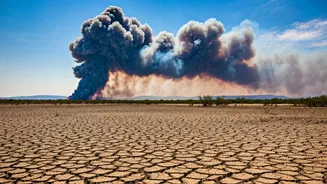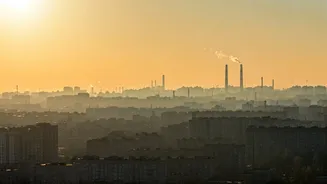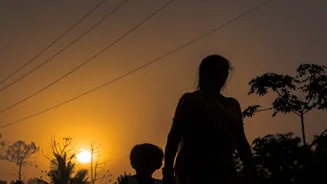Wildfire Impacts Explored
A global assessment conducted recently has brought to light the serious ramifications of wildfires that occurred in India throughout 2024-25. The data
indicates that approximately 15 million people across the nation were adversely impacted by these events. The analysis underscored the widespread nature of the problem, indicating its presence across various regions of India. The analysis helps to paint a picture of the overall consequences, emphasizing not just the immediate effects of the fires, but also the broader ramifications such as air quality degradation, habitat destruction, and the displacement of communities. This also sets the stage for a deeper investigation into the regional variations and localized factors that amplified the severity of the fires in specific areas.
UP's Significant Burden
Uttar Pradesh emerged as the state that suffered the most from these wildfires during the specified period. The analysis revealed that UP experienced the most severe impacts among all regions surveyed. This high level of impact can be seen across different dimensions, from the number of people directly affected to the ecological damage. It implies a critical need for focused interventions in UP. The specifics of the devastation in UP necessitate detailed examination. Furthermore, it is important to understand the factors within the state that might have intensified the impact of wildfires. Such factors include specific environmental conditions, land management practices, and any pre-existing vulnerabilities of the local communities and ecosystems. Understanding these localized aspects is crucial for devising effective mitigation and adaptation strategies, as well as providing the necessary support to the affected populations.
Magnitude of the Disaster
The number of people impacted, which stands at an estimated 15 million, underscores the massive scale of the disaster. This high number is not just a statistic; it signifies widespread suffering, including displacement, health problems, and loss of livelihoods. The extensive nature of the damage reveals weaknesses in preparedness and response mechanisms. Beyond the immediate effects, the fires have long-term consequences, affecting the environment, healthcare, and socioeconomic stability across the affected regions. A comprehensive understanding of the crisis demands a holistic perspective that includes both immediate consequences and long-term implications. This is necessary to facilitate effective decision-making and ensure adequate resources are allocated to support the affected communities and to foster the resilience of the impacted ecosystems.
Looking Ahead and Beyond
This event serves as a call for robust measures to prevent and manage future wildfires in India. It demands enhanced investments in fire detection, rapid response systems, and comprehensive forest management practices. Moreover, there is a clear necessity for targeted efforts to address the vulnerabilities within Uttar Pradesh. This involves strengthening local fire services, implementing effective land-use policies, and building communities' awareness about wildfire risks. Besides immediate actions, climate change and sustainable development strategies must be integrated into long-term planning. This encompasses promoting sustainable practices, protecting biodiversity, and fostering climate resilience. By implementing such measures, India can aim to reduce the impact of wildfires and safeguard the well-being of its citizens and environment.















